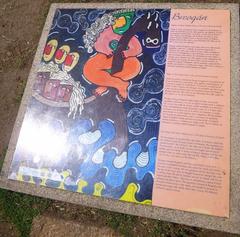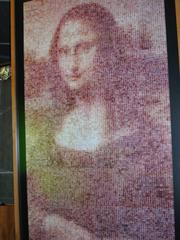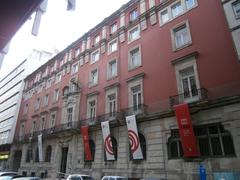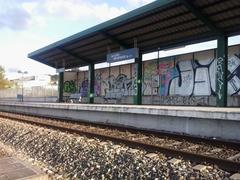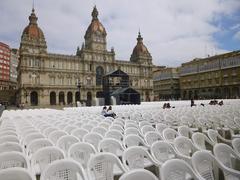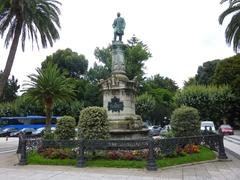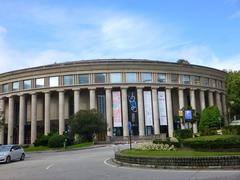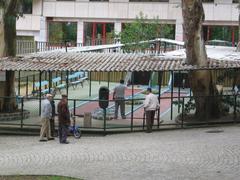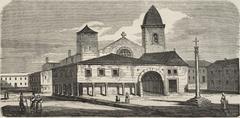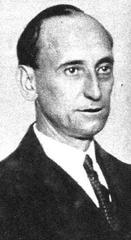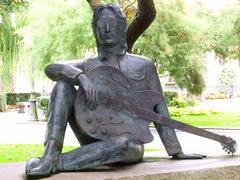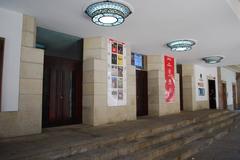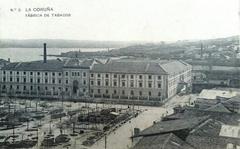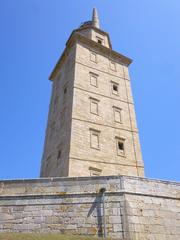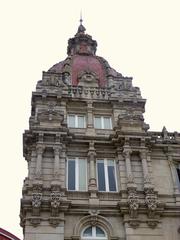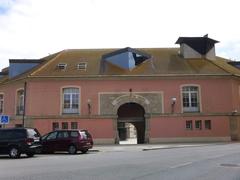Visiting the Church of San Francisco de Asís, A Coruña, Spain: The Complete Guide
Date: 04/07/2025
Introduction
The Church of San Francisco de Asís in A Coruña, Spain, stands as a profound symbol of Franciscan heritage, architectural evolution, and the vibrant cultural landscape of Galicia. Founded in the early 13th century, this historic church reflects the enduring presence of the Franciscan order and the city’s layered history, from medieval origins and royal visits to post-siege reconstruction and modern preservation (sfrancisco.es, visitsights.com). Today, the church is not only an architectural marvel but also an active center for worship, community events, and cultural discovery.
This comprehensive guide provides everything you need to plan your visit, including details on the church’s history, architectural highlights, visiting hours, accessibility, practical tips, and must-see nearby attractions.
Historical Overview
Early Foundations and Medieval Origins
The Church of San Francisco de Asís was established in the 13th century by Fray Benincasa de Tuderto, a Franciscan emissary sent by Saint Francis of Assisi. Originally located outside the city walls, the convent quickly became a hub for spiritual life, education, and charity, embodying the Franciscan ideals of poverty and service (visitsights.com).
Destruction and Rebuilding: The English Siege
In 1589, during the Anglo-Spanish War, the original convent was destroyed by defenders to prevent its use by the English army under Sir Francis Drake. This pivotal event led to the loss of the medieval structure and the subsequent relocation of the church within the city (visitsights.com).
Relocation and Architectural Evolution
Rebuilt on Paseo das Pontes, the new church is renowned for its fusion of Romanesque, Gothic, Renaissance, Baroque, and Neoclassical elements. Its robust stone façade and elaborate altarpieces reflect centuries of artistic innovation and devotion (sfrancisco.es). The relocation and modern interventions by architects such as Francisco Pons Sorolla preserved original features while accommodating new artistic expressions.
Artistic and Cultural Significance
Inside, the church houses Venetian-style mosaics restored by the Vatican Mosaic Studio, medieval sculptural decorations, and altarpieces that narrate the region’s artistic heritage (iglesiascascoantiguo.org). The funerary chapel, with imagery of heaven and hell, offers a powerful reflection on medieval spirituality.
Architectural Highlights
Romanesque Foundations
Thick masonry walls, semi-circular arches, and a solid, grounded layout are hallmarks of the church’s Romanesque origins. These features evoke a sense of permanence and spiritual strength.
Gothic Verticality and Light
Pointed arches, ribbed vaults, and slender columns define the Gothic influence. Large stained glass windows bathe the interior in natural light, creating a contemplative atmosphere (iglesiascascoantiguo.org).
Renaissance Ornamentation
Intricate capitals, friezes, and decorative elements showcase the church’s Renaissance artistry, particularly visible in the presbytery and chapels.
Venetian Mosaics
The presbytery’s Venetian mosaics—crafted from glass and gold enamel—are a rare and striking feature in Galicia, restored by the Vatican Mosaic Studio in 2015. Their vibrant iconography and shimmering surfaces create a sacred ambiance.
The Bell Tower
The bell tower is the highest point in A Coruña’s old quarter. Its multi-period design and sculpted images of Jesuit saints make it both a spiritual and urban landmark (iglesiascascoantiguo.org).
Visitor Information
Location
- Address: Avda. de Calvo Sotelo 41, 15004 A Coruña, Spain
- Easily accessible by city bus, with some street parking available (coruna.gal)
Visiting Hours
- Monday to Saturday: 10:00 AM – 6:00 PM
- Sunday: 12:00 PM – 5:00 PM
- Mass Schedule: Monday to Saturday at 12:00 and 20:00; Sundays and holidays at 11:00 (Galician), 12:00, 13:00, 20:00 (coruna.gal)
Hours may vary during holidays or special events; check the parish website for updates.
Admission and Guided Tours
- Admission: Free. Donations are appreciated to support preservation.
- Guided Tours: Available for a small fee; book in advance via the parish office or tourist information center.
Accessibility
- The church is wheelchair accessible, with ramps and accessible restrooms.
- For special assistance, contact the parish office at +34 981 14 45 55 (parroquias.eu).
Visitor Etiquette and Dress Code
- Dress modestly (shoulders and knees covered), especially for services.
- Observe silence and respect during mass; photography is generally allowed outside of services but not during them—always ask for permission (tayloronatrip.com).
Practical Tips and Best Times to Visit
- Best Times: Late spring or early autumn for pleasant weather and fewer crowds (easeweather.com, whereandwhen.net).
- Language: Masses in both Spanish and Galician; basic Spanish or translation apps recommended.
- Safety: A Coruña is generally safe; standard precautions advised (tayloronatrip.com).
Nearby Attractions
- Santa Margarida Park: Ideal for relaxation and picnics.
- Casa de las Ciencias: Interactive science museum for families.
- Tower of Hercules: UNESCO World Heritage Roman lighthouse.
- Old Town (Ciudad Vieja): Historic streets and squares.
- Military Museum and María Pita Square: Essential stops for history and culture (spain.info).
Cultural Events and Community Life
The church is a hub for festivals, concerts, and charitable events, offering visitors a chance to engage with local traditions. Special liturgical celebrations such as Corpus Christi and the feast of Saint Francis of Assisi are particularly noteworthy (parroquias.eu).
Frequently Asked Questions (FAQ)
Are tickets required?
No, entry is free. Donations are welcome.
Are guided tours available?
Yes, by advance arrangement through the parish office.
Is the church accessible for people with disabilities?
Yes, with ramps and accessible restrooms.
Can I take photographs inside?
Photography is allowed outside of services; always ask for permission.
How do I get there?
By city bus or on foot from the city center; limited street parking available.
Final Tips and Recommendations
- Attend the Sunday mass at 11:00 am (in Galician) for a local experience.
- Explore nearby parks and the Old Town as part of your visit.
- Check the parish website or noticeboard for upcoming events.
- Respect the sacred atmosphere, especially during services.
For the latest updates, use the official parish website and consider the Audiala app for guided tours and real-time visitor information.
Summary
Visiting the Church of San Francisco de Asís in A Coruña is a journey through centuries of art, faith, and resilience. Its blend of Romanesque, Gothic, Renaissance, Baroque, and Neoclassical features, along with its community spirit and central location, make it an essential stop for any visitor to Galicia (sfrancisco.es, iglesiascascoantiguo.org, coruna.gal, visitsights.com). Immerse yourself in its serene atmosphere, explore its rich art and history, and connect with the living traditions that define this remarkable monument.
Sources and Official Links
- VisitSights: Visiting the Church of San Francisco de Asís in A Coruña
- Parroquia de San Francisco de Asís Official Site
- Iglesias Casco Antiguo: Church of San Francisco de Asís
- Coruna.gal: Parish Information
- Spain.info: A Coruña
Download the Audiala app for personalized tours and current information. Stay connected on social media for more guides and updates on A Coruña’s heritage.


